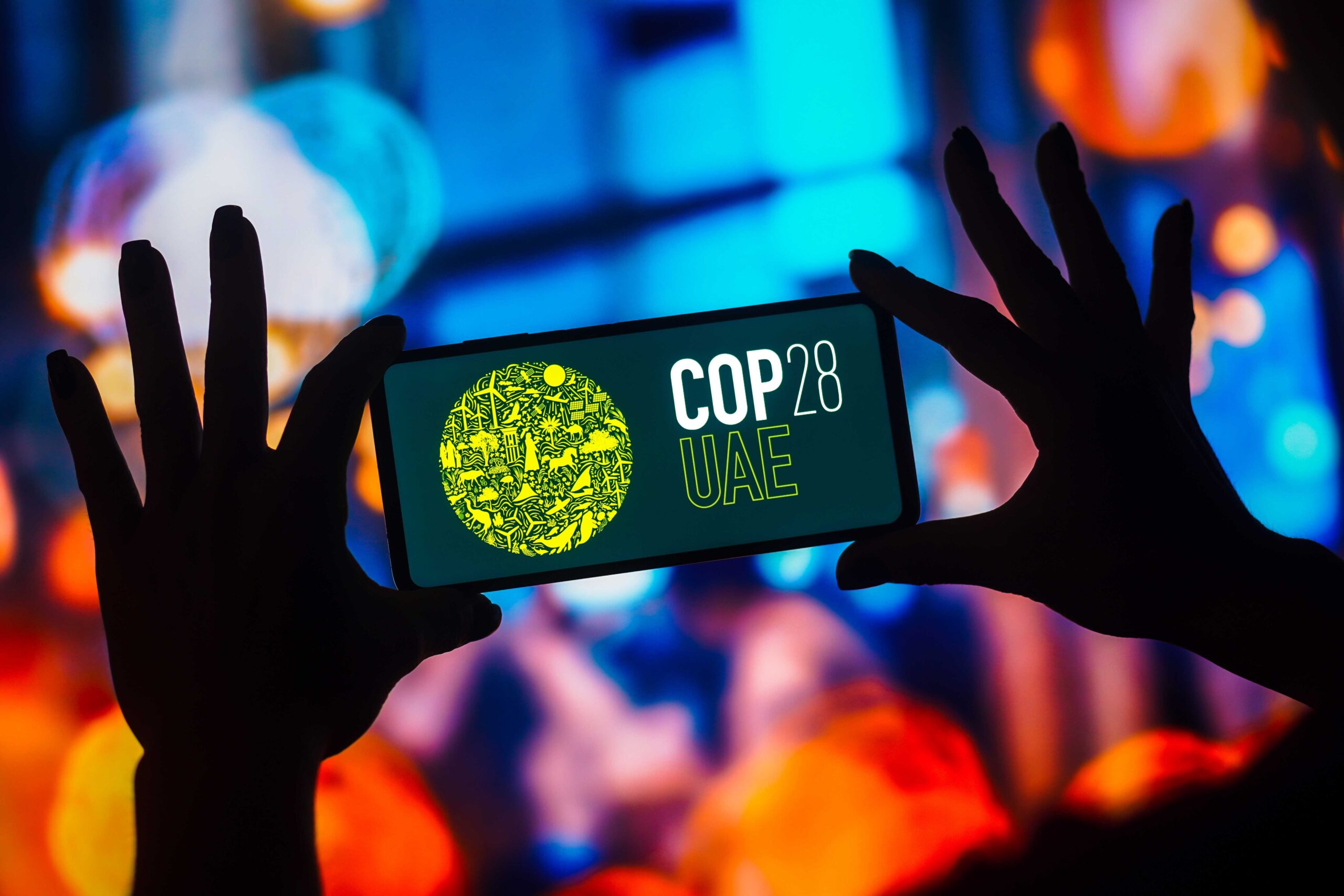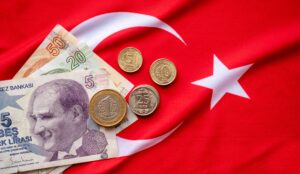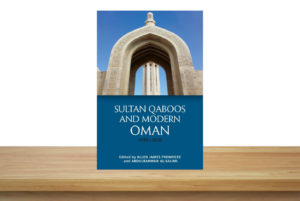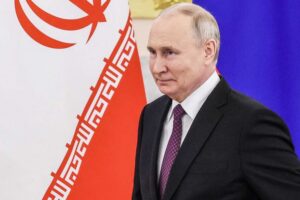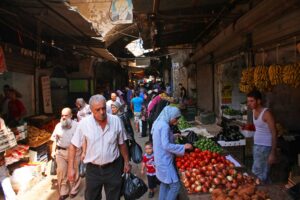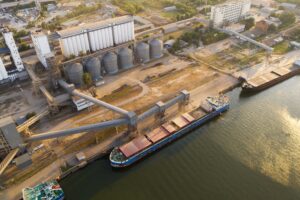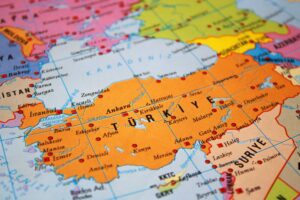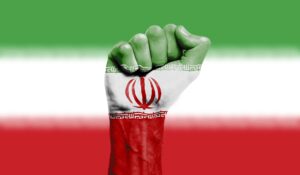Many of the world’s largest cities will be exposed to intolerable levels of heat this century if global warming, which has risen on average by just over 1 degree Celsius since the pre-industrial era, continues to rise to breach 2 °C.[1] And it will not only influence South Asia. In the Midde East, cities in Saudi Arabia as well as the United Arab Emirates—which is hosting this year’s COP28 UN climate summit—could experience days of unbearable heat each year. As many as 4 billion people across Pakistan, India, China, parts of the Middle East and Africa, as well as the US Midwest would be at risk of facing lethal outdoor conditions.[2]
Yet, recent studies have warned that the world is already on track to breach the 2 °C threshold—let alone stay below the 1.5 °C safe limit enshrined in the Paris Agreement. One study funded by the U.S. Department of Energy used an AI model trained on patterns of past warming scenarios to predict future trends. It concluded that even if greenhouse gas emissions fall in the coming decades, global warming would still rise by 2 °C due to greenhouse gas emissions already built-up in the atmosphere. This implies that most international net zero by 2050-2080 plans are inadequate. To avoid these catastrophic scenarios, the entire world has to rapidly reduce the amount of carbon dioxide, methane, and other greenhouse gases being added to the atmosphere.[3]
Warming has intensified arid conditions, resulting in a decline of freshwater resources by 60% over the last 40 years, severely straining agriculture, which employs about 35% of the region's population.
Pakistan is one of many countries on the frontlines of climate change. Despite being responsible for less than 1% of greenhouse gas emissions, Pakistanis are 15 times more likely to die from climate-related disasters. Last year, record floods amplified by climate change killed more than 1,700 people, destroyed 2 million homes, and pushed an estimated nine million more people below the poverty line in Pakistan. The deluge caused more than $30 billion in damages, of which donors pledged to help with $10 billion—but just 69% of that target was actually delivered.[4]
Climate change is exerting a similarly significant and escalating toll on the Middle East, with a slew of concerning statistics highlighting the region’s vulnerability. Average temperatures have surged by approximately 1.3 °C in the past few decades, surpassing the global average discussed above, and are expected to increase by up to 4 °C by 2100 if emissions continue unabated. This warming has intensified arid conditions, resulting in a decline of freshwater resources by 60% over the last 40 years, severely straining agriculture, which employs about 35% of the region’s population. Extreme heatwaves, which now occur more than twice as often as in the 1980s, are causing health-related issues, with heat stress accounting for over 3,000 deaths per year in some Middle Eastern countries.[5] Furthermore, escalating desertification threatens land degradation and biodiversity loss as well as the rising frequency of extreme weather events like storms and floods, and it has already displaced hundreds of thousands, further challenging the region’s socioeconomic and political stability.
Climate Financing
This underscores a critical gap in climate financing – one that is exacerbated by broken promises of support from the developed world. The commitment made at COP15 to provide $100 billion annually to help vulnerable regions meet climate targets has still not been fulfilled. Today, developing countries require a much larger yearly sum of $2.5 trillion for their mitigation and adaptation efforts.[6] With COP28 taking place at the end of November, all eyes across the developing world are set on the conference to usher in solutions desperately needed.
Indeed, this year’s COP agenda seems to actually see and hear the pleas of the developing world, featuring a heavy focus on mobilizing climate financing for countries that need it the most. The COP28 President-Designate, Dr Sultan Al Jaber, has gone out of his way to emphasize the urgency of delivering the long-awaited $100 billion climate financing target, as well as rekindling other promises kept by developed nations, in order to double adaptation finance by 2025 to replenish the Green Climate Fund.[7] Al Jaber is also the first COP president to call for a complete transformation of the international financial system—one that incorporates the private sector to unlock trillions of dollars in investments for developing nations.[8] He told the African Ministerial Conference on the Environment in Ethiopia last August that “the entire global financial architecture from international finance institutions to multilateral development banks needs modernising. They were built for the second half of the last century. They urgently need to be upgraded to meet the needs of this one”.[9] On several occasions, he has highlighted the need for increased concessional funds to the Global South to lower risks and attract private capital.[10] Simultaneously, he has voiced his determination to finalize and operationalize the loss-and-damage fund agreed at COP27, hoping to disburse the first cash soon after this year’s proceedings.[11] These developments signal a beacon of hope.
Phasing Down Fossil Fuels
COP28’s approach to the fossil fuel debate is also responsive to the nuanced plight of developing countries. In the past, demands for a complete phase-out of fossil fuels at these climate summits have been unsuccessful. Apart from the obvious difficulty of getting all countries to agree on such a goal, diversification from high-risk carbon components into renewable energy is often a far-fetched reality for much of the developing world.
Pakistan, for instance, has tremendous potential to generate solar, hydro, and wind power, but no sufficient infrastructure, technology, or financial support to channel this potential into sustainable solutions. Several other countries are at-risk economies heavily dependent on oil and gas due to their relatively affordable upfront capital costs compared to that of renewables, which is why simplistic campaigning for the swift elimination of fossil fuels threatens to deprive the developing world of much-needed growth and development.
The Middle East, and the UAE in particular, is not only reducing its carbon footprint but also diversifying its economy.
The Middle East too holds immense potential for alternative energy projects, primarily due to its abundant solar resources and the growing commitment to diversify energy sources. One example is the United Arab Emirates (UAE), which has made significant strides in this regard. The UAE’s Noor Solar Power Complex in Abu Dhabi, one of the world’s largest solar projects, showcases the country’s ambition to harness its abundant sunshine for clean energy. In addition, the UAE has invested in nuclear energy, with the Barakah Nuclear Power Plant becoming the first operational nuclear facility in the Arab world, contributing to a more diversified energy mix and reduced carbon emissions. The region is also increasingly exploring wind and desalination technologies powered by renewables. By embracing these innovative projects, the Middle East, and the UAE in particular, is not only reducing its carbon footprint but also diversifying its economy, creating jobs, and setting an example for sustainable energy development that other countries can emulate.
The COP28 Presidency has demonstrated it acknowledges the complexity of these challenges, advocating a pragmatic transition away from oil and gas by promoting decarbonization of the fossil fuel industry and renewable energy initiatives, backed by unlocking finance. Among some of the targets the conference has set out are calls to double energy efficiency, triple the world’s renewable energy by 2030, double it again by 2040, phase down the use of fossil fuels, and phase out fossil fuels whose emissions are not captured.[12]
Practice What You Preach
In a world where the promises made by developed countries often remained unfulfilled, it is refreshing to see the UAE’s efforts to practice what it is preaching. It has not shunned its status as one of the world’s major oil-producing nations but leveraged this position into a unique case study of how to transition away from fossil fuels fairly and equitably. In the lead-up to its COP28 presidency, the UAE put in plans to deploy renewable energy projects worth over $300 billion by 2030—more than any previous COP president nation—including supporting 70 developing countries with green infrastructure and clean energy initiatives[13]. Recently, it announced a $4.5 billion pledge at the African Climate Summit, aiming to mobilize over $13 billion of project finance as a commercial case for rapid scaling of clean energy across Africa,[14] and signed significant deals to promote renewable energy in India[15] and Pakistan as well.[16]
Despite criticism of Dr Al Jaber for being the CEO of the UAE’s national oil company, Adnoc, Adnoc’s pioneering efforts to accelerate the UAE’s transition to a low-carbon economy are notable. Under Al Jaber’s leadership, the company transitioned 100% of its upstream operations to nuclear and solar power, and has now committed to double its carbon capture capacity by 2030 (capturing just under half its current upstream emissions) and achieve net zero by 2045.[17] To meet these targets, Adnoc announced a $15 billion decarbonization investment in low-carbon solutions with the potential for a scale-up, including the Habshan carbon capture, utilization, and storage project, one of the largest carbon capture initiatives in the MENA region.[18] In the past few months, Adnoc has committed $17 billion for a net zero emissions gas project,[19] $2.2 billion for a sustainable water supply project for its onshore operations in partnership with the Abu Dhabi National Energy Company (TAQA),[20] made strides on the first project in the Gulf region to harness geothermal energy in collaboration with Tabreed,[21] and announced a $1 million Decarbonization Technology Challenge to advance energy transition solutions.[22] These investments are collectively much higher than what other larger oil producers such as the US, Europe and China are implementing for the purposes of decarbonization. This has set a bold direction for other oil companies across the world to pursue similar decarbonization strategies, and strike a balance between their dependence on fossil fuels and commitment to the energy transition.
In a recent interview with the Guardian, Al Jaber set out his rationale for why Adnoc’s investments in new oil and gas production capacity are consistent with radical climate ambitions. He explained that while Adnoc will have a greater capacity to produce more oil and gas, it will not actually produce more oil and gas unless global energy demand requires it. In other words, unless consumers want it. He also noted that even in the UN Intergovernmental Panel on Climate Change’s (IPCC) net zero scenarios, a small quantity of fossil fuels will still be necessary. While emphasizing that he believed fossil fuel production would inevitably be phased down over the coming decades, Adnoc’s commitment to decarbonization would make it the cleanest oil and gas in the world. Al Jaber is setting a new competitive standard for the oil industry: decarbonization.[23]
In addition to leading Adnoc’s decarbonization efforts, Dr Sultan Al Jaber is the founder of Masdar—the largest renewable energy operator in Africa, on track to becoming the second-largest renewable energy operator in the world by 2030 with plans to expand its renewable energy assets by $150 billion.[24] Masdar has recently launched the UAE’s first utility-scale wind project with breakthrough low wind speeds innovation,[25] and announced an investment of $8 billion in renewable energy projects in Malaysia.[26]
Most Ambitious COP?
A recent report authored by environmental and development experts from the Global South found that Al Jaber’s climate plan is the most radical ever produced by a COP presidency. Based on a comparative analysis of the last five UN COP climate agendas as well as the way their presidencies were conducted, the report concluded that the upcoming conference offered “the most ambitious UN climate plan in history”, with radical scope for transformative action if even some of COP28’s big-ticket agenda items are delivered.[27]
COP28 holds tremendous promise to be a ground-breaking UN climate summit. In particular, it has the potential to be a watershed for developing countries at the greatest risk of climate impacts, aiming to deliver old commitments and herald new ones aimed at inclusive sustainable development.
CO28 prioritizes financing and technology transfer for climate adaptation and mitigation in the Middle East.
The 2023 COP28 summit has ambitious goals with particular relevance to the Middle East. It seeks to accelerate global efforts to limit global warming to 1.5 °C above pre-industrial levels, recognizing the region’s vulnerability to extreme heat and water scarcity. COP28 aims to encourage Middle Eastern nations to adopt more aggressive emissions reduction targets, given their significant contributions to greenhouse gas emissions, while also supporting their transition to cleaner and more sustainable energy sources. Additionally, the summit prioritizes financing and technology transfer for climate adaptation and mitigation in the Middle East, acknowledging the region’s need to address challenges such as water scarcity and desertification. In doing so, COP28 aims to ensure that the Middle East plays a pivotal role in the global fight against climate change, fostering a more sustainable and resilient future for the region.
[1] Vecellio, D. et. al. (2023). “Greatly enhanced risk to humans as a consequence of empirically determined lower moist heat stress tolerance”, Proceedings of the National Academy of Sciences, Vol. 120, No. 42 https://doi.org/10.1073/pnas.2305427120.
[2] Igini, M., (2023). “Climate Change Will Bring Long Periods of Lethal Heat and Humidity By End of Century, Even Under 2C of Warming”, Earth.org, 11 October 2023, retrieved from https://earth.org/climate-change-will-bring-long-periods-of-lethal-heat-and-humidity-by-end-of-century-even-under-2c-of-warming/.
[3] Diffenbaugh, N.S. and Barnes, E. (2023). “Data-driven predictions of the time remaining until critical global warming thresholds are reached”, Proceedings of the National Academy of Sciences, Vol. 120, No. 6, 30 Janaury 2023, retrieved from https://doi.org/10.1073/pnas.2207183120.
[4] Hussein, A., (2023). “UN chief says Pakistan floods ‘litmus test for climate justice’ as aid lags”, 28 September 2023, retrieved from https://www.aljazeera.com/news/2023/9/28/un-chief-says-pakistan-floods-litmus-test-for-climate-justice-as-aid-lags.
[5] Stepanyan, V. et al. (2022). “Feeling the heat: Adapting to climate change in the Middle East and Central Asia.” Departmental Papers, vol. 2022, no. 008, 2022, p. 1, retrieved from https://doi.org/10.5089/9781513591094.087.
[6] Kozul-Wright, R. (2023). “United Nations Conference on Trade & Development (UNCTAD), A climate finance goal that works for developing countries”, 14 June 2022, retrieved from https://unctad.org/news/climate-finance-goal-works-developing-countries.
[7] World Resources Institute (2023). “Statement: COP28 Presidency Unveils Agenda for UN Climate Summit”, 13 July 2023, retrieved from https://www.wri.org/news/statement-cop28-presidency-unveils-agenda-un-climate-summit.
[8] COP28 (2023). “COP28 President-Designate: Protecting Lives and Livelihoods Should be Central to our Global Climate Response”, retrieved from https://www.cop28.com/en/news/2023/08/13/05/28/ministerial-meeting-in-goa#:~:text=%E2%80%9CFor%20countries%20that%20have%20done,just%20billions%20in%20multilateral%20loans.%E2%80%9D.
[9] Bulbulia, T. (2023). “COP28 president-designate calls for climate finance delivery”, Engineering News, 13 August 2023, retrieved from https://www.engineeringnews.co.za/article/cop28-president-designate-calls-for-climate-finance-delivery-2023-08-18.
[10] Al Arabiya (2023). “Al Jaber emphasizes need to reform to unlock trillions in climate finance”, 13 April 2023, retrieved from https://english.alarabiya.net/business/economy/2023/04/13/Al-Jaber-emphasizes-need-to-reform-to-unlock-trillions-in-climate-finance.
[11] Havery, F. and Niranjan, A. (2023). “What is the UAE COP28 plan of climate action?”, 13 July 2023, retrieved from https://www.theguardian.com/environment/2023/jul/13/what-is-the-uae-cop28-plan-of-climate-action.
[12] Civillini, M. (2023). “UAE minister calls for “phase out” of oil and gas”, 21 February 2023, retrieved from https://www.climatechangenews.com/2023/02/21/uae-fossil-fuel-cop28-al-jaber/.
[13] Ozdemir, I. et. al. (2023). ‘COP28 – Progress or Regression?: An Empirical and Historical Comparative Analysis of COP Summits’, Uskudar University and the ASEAN Council, retrieved from https://uskudar.edu.tr/en/icerik/42331/cop28-progress-or-regression.
[14] Changole, A. (2023). “UAE Pledges $4.5 Billion to Finance Africa Climate Projects”, 5 September 2023, retrieved from https://www.bloomberg.com/news/articles/2023-09-05/uae-pledges-4-5-billion-to-help-finance-africa-climate-projects.
[15] Kumar, D. (2023). “India-UAE to sign deal on renewable energy grid link: Union Minister RK Singh”, 15 January 2023, retrieved from https://www.livemint.com/news/india/indiauae-to-sign-deal-on-renewable-energy-grid-link-union-minister-rk-singh-11673798679292.html.
[16] Arian, A.L. (2023). “Pakistan, UAE sign renewable energy deal”, 6 July 2023, retrieved from https://www.aa.com.tr/en/middle-east/pakistan-uae-sign-renewable-energy-deal/2938922.
[17] World Oil (2023) “Adnoc to double carbon capture capacity, reaffirms decarbonization goals”, 1 October 2023, retrieved from https://www.worldoil.com/news/2023/10/1/adnoc-to-double-carbon-capture-capacity-reaffirms-decarbonization-goals/.
[18] Oil Review Africa (2023). “Adnoc announced FID on major CCUS project in MENA region”, 15 September 2023, retrieved from https://www.oilreviewafrica.com/exploration/industry/adnoc-announces-fid-on-major-ccus-project-in-mena-region.
[19] Reuters (2023). “UAE’s Adnoc awards $7 billion of contracts for gas project”, 5 October 2023, retrieved from https://www.reuters.com/sustainability/climate-energy/adnoc-awards-contracts-gas-project-aiming-net-zero-co2-emissions-2023-10-05/.
[20] Reuters (2023) “Adnoc, Abu Dhabi’s TAQA secure financing for $2.2 bln water project”, 25 September 2023, retrieved from https://www.reuters.com/sustainability/adnoc-abu-dhabis-taqa-secure-financing-22-bln-water-project-2023-09-25/.
[21] Renewable Energy Magazine (2023). “Adnoc and Tabreed Advance the First Project in Gulf Region to Harness Geothermal Energy”, 17 August 2023, retrieved from https://www.renewableenergymagazine.com/geothermal/adnoc-and-tabreed-advance-the-first-project-20230817.
[22] Cavcic, M. (2023). “Adnoc goes over its decarbonization progress”, 29 September 2023, retrieved from https://www.offshore-energy.biz/adnoc-goes-over-its-decarbonization-progress/.
[23] Harvey, F. (2023). “‘I wasn’t the obvious choice’: meet the oil man tasked with saving the planet”, Guardian, 7 October 2023, retrieved from https://www.theguardian.com/environment/2023/oct/07/meet-the-oil-man-tasked-with-saving-the-planet-cop28.
[24] Ozdemir, I. et al. (2023). ‘COP28 – Progress or Regression?: An Empirical and Historical Comparative Analysis of COP Summits’, Uskudar University and the ASEAN Council, retrieved from https://uskudar.edu.tr/en/icerik/42331/cop28-progress-or-regression.
[25] Masdar (2023), “Masdar launches UAE’s first utility scale wind project with breakthrough low wind speed innovation”, 5 October 2023, retrieved from https://www.prnewswire.com/news-releases/masdar-launches-uaes-first-utility-scale-wind-project-with-breakthrough-low-wind-speed-innovation-301948274.html.
[26] Cossins-Smith, A. (2023) “Masdar signs MoU with Malaysia for 10GW of renewables development”, 10 October 2023, retrieved from https://www.power-technology.com/news/masdar-malaysia-renewables-mou-10gw-8bn/.
[27] Ozdemir, I. et al. (2023). ‘COP28 – Progress or Regression?: An Empirical and Historical Comparative Analysis of COP Summits’, Uskudar University and the ASEAN Council, retrieved from https://uskudar.edu.tr/en/icerik/42331/cop28-progress-or-regression.


